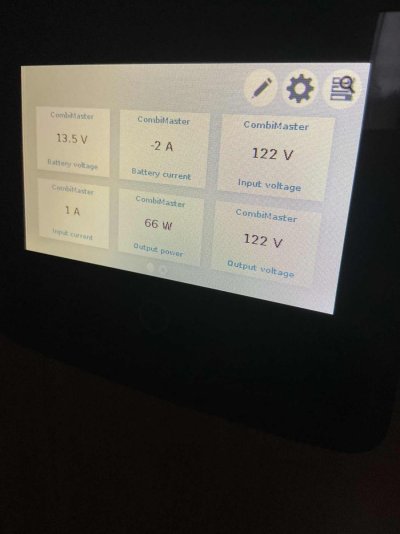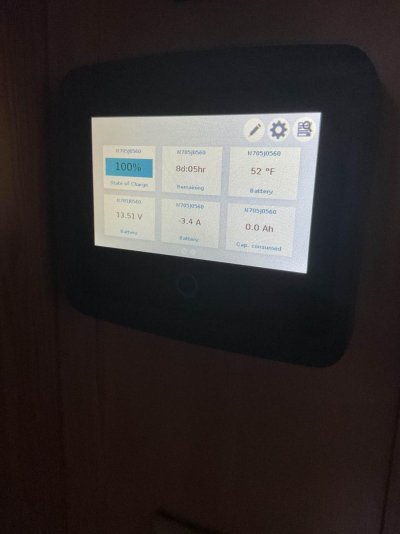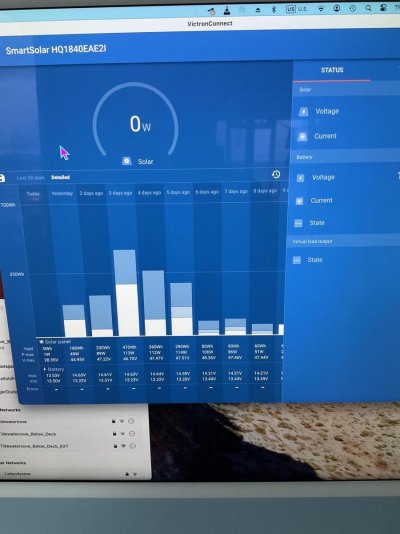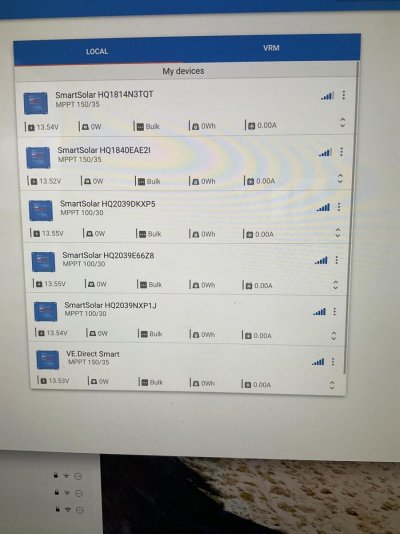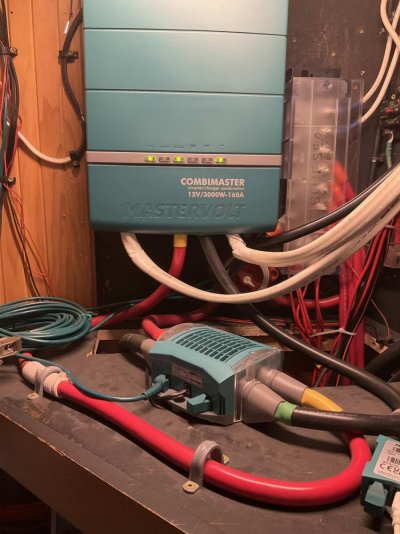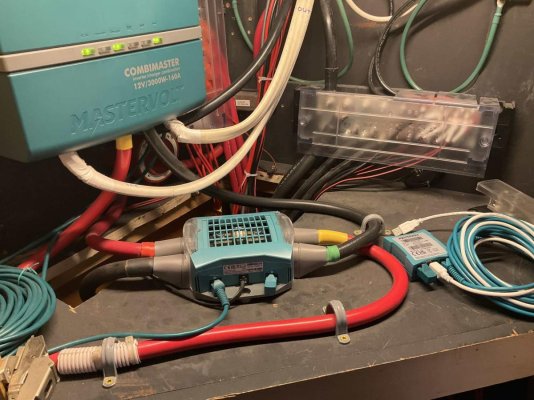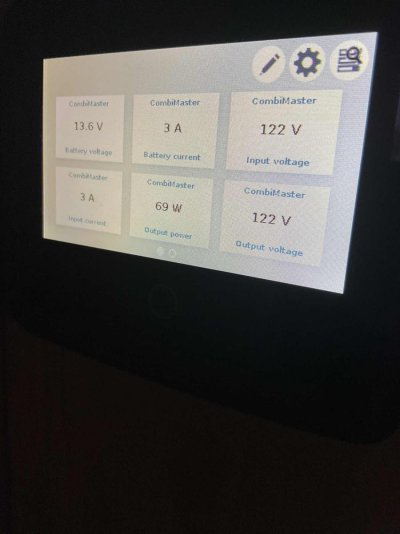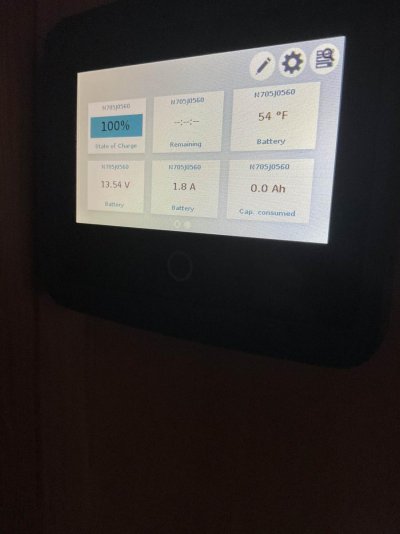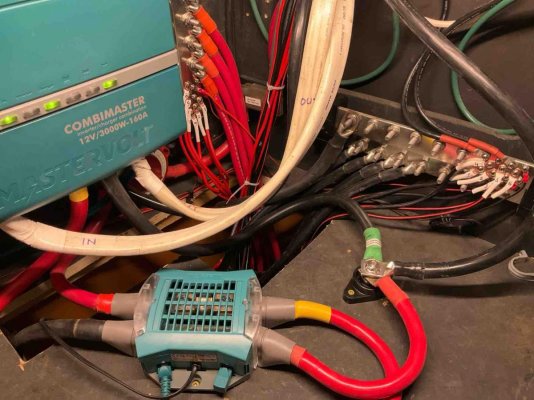LeoKa
Guru
- Joined
- Apr 15, 2017
- Messages
- 1,223
- Location
- USA
- Vessel Name
- Ironsides
- Vessel Make
- 54' Bruce Roberts steel sailboat hull, coastal LRC, 220HP CAT 3306.
Recently I finished my solar panel installation. I have 6 panels total. 2 375W and 4 220W bifacial.
Once everything was connected, I wanted to test how long will it take to charge the batteries. These are lithiums, 4x170Ah=680 Ah total, with built in BMS by the manufacturer. The recommended voltage by the manufacturer is 14.6V. All levels, bulk/absortion/float.
The charge goes smoothly and I can monitor on the Victron app all the MPPT chargers. I have 6, one for each panel. They are a mix of 150/35 and 100/30 charge controllers. To complete the charge of the bank takes about 2-3 hours and all chargers show 14.6V and practically no more charging occurs.
However, the SOC of the bank is slowly going down. I monitor this with Mastervolt EasyView display, which is connected to a MasterShunt with a 350A fuse. In two days, the SOC went down to 55%.
The Victron MPPT chargers allow customization and they are all set to charge to 14.6V
The Mastervolt does not allow any customization for lithiums, but gives me monitoring feature.
The explanation I am looking for is why the batteries go down, when the panels are still providing?
Is it because the Victron and Mastervolt understand things differently? Can it be that the Mastervolt monitoring is not accurate, because the batteries are not from Mastervolt?
My original hope was to have the solars always on and charge the batteries daily and avoid using the Mastervolt charging feature, when I am away from the boat for longer period.
Yesterday, I let the batteries go down the 71% SOC. The solar panels were charging, but it still went down. When turned the Mastervolt charger back from shore-power, the SOC started to climb and in few minutes jumped to 100%. This tells me that something is not sensing things accurately.
I did order another monitoring device from the battery manufacturer and it is on its way. I want to see what will that show on the SOC?
Once everything was connected, I wanted to test how long will it take to charge the batteries. These are lithiums, 4x170Ah=680 Ah total, with built in BMS by the manufacturer. The recommended voltage by the manufacturer is 14.6V. All levels, bulk/absortion/float.
The charge goes smoothly and I can monitor on the Victron app all the MPPT chargers. I have 6, one for each panel. They are a mix of 150/35 and 100/30 charge controllers. To complete the charge of the bank takes about 2-3 hours and all chargers show 14.6V and practically no more charging occurs.
However, the SOC of the bank is slowly going down. I monitor this with Mastervolt EasyView display, which is connected to a MasterShunt with a 350A fuse. In two days, the SOC went down to 55%.
The Victron MPPT chargers allow customization and they are all set to charge to 14.6V
The Mastervolt does not allow any customization for lithiums, but gives me monitoring feature.
The explanation I am looking for is why the batteries go down, when the panels are still providing?
Is it because the Victron and Mastervolt understand things differently? Can it be that the Mastervolt monitoring is not accurate, because the batteries are not from Mastervolt?
My original hope was to have the solars always on and charge the batteries daily and avoid using the Mastervolt charging feature, when I am away from the boat for longer period.
Yesterday, I let the batteries go down the 71% SOC. The solar panels were charging, but it still went down. When turned the Mastervolt charger back from shore-power, the SOC started to climb and in few minutes jumped to 100%. This tells me that something is not sensing things accurately.
I did order another monitoring device from the battery manufacturer and it is on its way. I want to see what will that show on the SOC?

